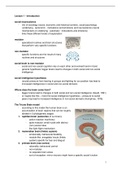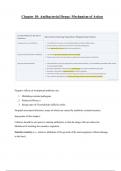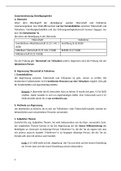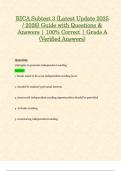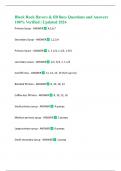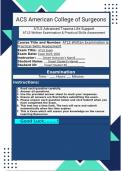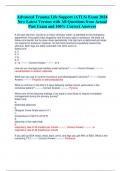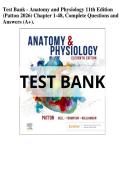Lecture 1 - introduction
social neuroscience
- mix of sociology (social, economic and historical context), social psychology
(underlying - autonomic - motivations and emotions) and neuroscience (neural
mechanisms of underlying - automatic - motivations and emotions)
- links these different levels of explanation
modular
- specialized routines and brain structures
that perform very specific functions
non-modular
- specific functions are the result of many
routines and structures
social brain is non-modular
- social and non-social cognition rely on each other and evolved hand-in-hand
- general hypothesis: bigger brains lead to changes in both social and non-social
intelligence
social intelligence hypothesis
- (social) pressure from leaving in groups and fighting for our position has lead to
increased intelligences in social and non-social domains
Where does the brain come from?
- bigger brains lead to changes in both social and non-social intelligence (Gould, 1991)
- or maybe like this – more the social intelligence hypothesis – pressure to outwit
peers may lead to increased intelligence in non-social domains (Humphrey, 1976).
The Triune Brain model
- according to this model the human brain is an
accumulation of brain regions that can be roughly
divided in 3 phylogenetic stages
1. reptilian brain (subcortex of our brain)
- action-reaction machinery
- quite modular: small nuclei with distinct
(non-)social roles
- like fight-flight mechanism
2. mammalian brain (limbic system)
- emotionality: behavioral flexibility
- module-like: amygdala/ insula (limbic
system) specific for fear and disgust
3. primate brain (neo-cortex)
- rationality: behavioral control
- non-modular
- no separate brain areas
- sort of exception: mirror neurons might have a specific social function
1
, - each new layer supports more complex functions and exerts control over the older
layer(s)
- First fight, maybe after that cry and be emotional, and after that, control and
rationality
- example
- you see a tiger, so the reptilian brain will tell you ‘flight or fight’
- when the tiger is behind bars or far away, your mammalian brain (or
emotional brain) will asses the situation and give some behavioral
- large part of our behavior is still driven by the old part of our brain (by similar brain
mechanisms as our phylogenetic predecessors); control on the lower layers isn’t
perfect
- example
- someone with anxiety disorder might have reptilian brain reactions in
inappropriate situations
mirror neurons
- neurons that respond to both self-behavior and other-behavior
- like during intentional actions
- thought to serve observational learning
- learning from seeing someone else doing, which is highly evolved in humans
and a few primates
- higher order learning skill
- there may be comparable systems for emotion and sensation (e.g. pain) as well as
action
- not tightly localized to one region, so this would go against the idea of modular part
- however, the book states that mirror neurons might be a module-like solution to the
non-modular social brain
--> lecture 1.2 introduction min 13:00
methods of SNS - (psycho)physiology
- psychological methods: behavioural and cognitive measures
- physiological methods: skin conductance, heart-rate, muscle activity (EMG)
2
,psychological methods
- behavioral and cognitive measures
- these are essential measures, because biological measures without additional
information make no sense in social neuroscience
1. subjective measures
- emotional experience (feeling)
- using interviews or questionnaires
- POMS: profile of mood states
- personality questionnaires
- STAI/STAS (state-trait anxiety/anger)
- LSAS (Liebowitz social anxiety scale)
- ES-SQ (empathy/systemizing, related to autism)
- BIS/BAS (behavioral inhibition/activation)
- many more
- these data is useful
- as control variable
- for correlation with other measure
- to compare different studies (validate questionnaires)
2. observational measures
- frequency of behaviors, measured by scoring and counting
- creating a situation and measuring: what will the participant do?
- often used in animals and infant studies
- methods
- camera (blinding and inter-rater reliability to make sure the study is
valid and reliable)
- eye-tracking
3. performance measures
- reaction time and accuracy
- create a social or emotional situation and
measure the reaction time and accuracy
changes
- speed-accuracy trade-off
- restricted, but ‘real’ behavior
- stable because of many, many measurements
- the faster a participant is, the more error that will be made
- bringing a participant in social or emotional situation and measure how
it affects the results
- IQ-tests
- (emotion) recognition tests
- selective attention
- implicit association task
- (Gaze) cueing tasks
3
, - so the participant is performing a task while being distracted
- classical stroop task: interference of color and
word
- emotional stroop: interference of emotion
- facial fear stroop: interference of expression (
angry or happy faces → participants with high
trait angriness are slowing at naming the color after presentation of
an angry face relative to a neutral face)
summary
- subjective measures: emotional experience, personality, questionnaires
- observational measures: frequency of behaviors
- performance measures: reaction time, accuracy,
parasympathetic and sympathetic nervous system
- the body is controlled by the brain through the spinal cord
- sympathetic nervous system
- gets activated when your stressed or activated
- your heart-rate will go up, pupil gets bigger, digesting system goes down to
prepare the body for action
- parasympathetic nervous system
- gets activated when your relaxed and in rest
- your heart-rate will go down, digesting system will digest your food because
you have the time to do that
(electro)physiological methods
- skin conductance, heart-rate, muscle activity (EMG)
- examples
4
social neuroscience
- mix of sociology (social, economic and historical context), social psychology
(underlying - autonomic - motivations and emotions) and neuroscience (neural
mechanisms of underlying - automatic - motivations and emotions)
- links these different levels of explanation
modular
- specialized routines and brain structures
that perform very specific functions
non-modular
- specific functions are the result of many
routines and structures
social brain is non-modular
- social and non-social cognition rely on each other and evolved hand-in-hand
- general hypothesis: bigger brains lead to changes in both social and non-social
intelligence
social intelligence hypothesis
- (social) pressure from leaving in groups and fighting for our position has lead to
increased intelligences in social and non-social domains
Where does the brain come from?
- bigger brains lead to changes in both social and non-social intelligence (Gould, 1991)
- or maybe like this – more the social intelligence hypothesis – pressure to outwit
peers may lead to increased intelligence in non-social domains (Humphrey, 1976).
The Triune Brain model
- according to this model the human brain is an
accumulation of brain regions that can be roughly
divided in 3 phylogenetic stages
1. reptilian brain (subcortex of our brain)
- action-reaction machinery
- quite modular: small nuclei with distinct
(non-)social roles
- like fight-flight mechanism
2. mammalian brain (limbic system)
- emotionality: behavioral flexibility
- module-like: amygdala/ insula (limbic
system) specific for fear and disgust
3. primate brain (neo-cortex)
- rationality: behavioral control
- non-modular
- no separate brain areas
- sort of exception: mirror neurons might have a specific social function
1
, - each new layer supports more complex functions and exerts control over the older
layer(s)
- First fight, maybe after that cry and be emotional, and after that, control and
rationality
- example
- you see a tiger, so the reptilian brain will tell you ‘flight or fight’
- when the tiger is behind bars or far away, your mammalian brain (or
emotional brain) will asses the situation and give some behavioral
- large part of our behavior is still driven by the old part of our brain (by similar brain
mechanisms as our phylogenetic predecessors); control on the lower layers isn’t
perfect
- example
- someone with anxiety disorder might have reptilian brain reactions in
inappropriate situations
mirror neurons
- neurons that respond to both self-behavior and other-behavior
- like during intentional actions
- thought to serve observational learning
- learning from seeing someone else doing, which is highly evolved in humans
and a few primates
- higher order learning skill
- there may be comparable systems for emotion and sensation (e.g. pain) as well as
action
- not tightly localized to one region, so this would go against the idea of modular part
- however, the book states that mirror neurons might be a module-like solution to the
non-modular social brain
--> lecture 1.2 introduction min 13:00
methods of SNS - (psycho)physiology
- psychological methods: behavioural and cognitive measures
- physiological methods: skin conductance, heart-rate, muscle activity (EMG)
2
,psychological methods
- behavioral and cognitive measures
- these are essential measures, because biological measures without additional
information make no sense in social neuroscience
1. subjective measures
- emotional experience (feeling)
- using interviews or questionnaires
- POMS: profile of mood states
- personality questionnaires
- STAI/STAS (state-trait anxiety/anger)
- LSAS (Liebowitz social anxiety scale)
- ES-SQ (empathy/systemizing, related to autism)
- BIS/BAS (behavioral inhibition/activation)
- many more
- these data is useful
- as control variable
- for correlation with other measure
- to compare different studies (validate questionnaires)
2. observational measures
- frequency of behaviors, measured by scoring and counting
- creating a situation and measuring: what will the participant do?
- often used in animals and infant studies
- methods
- camera (blinding and inter-rater reliability to make sure the study is
valid and reliable)
- eye-tracking
3. performance measures
- reaction time and accuracy
- create a social or emotional situation and
measure the reaction time and accuracy
changes
- speed-accuracy trade-off
- restricted, but ‘real’ behavior
- stable because of many, many measurements
- the faster a participant is, the more error that will be made
- bringing a participant in social or emotional situation and measure how
it affects the results
- IQ-tests
- (emotion) recognition tests
- selective attention
- implicit association task
- (Gaze) cueing tasks
3
, - so the participant is performing a task while being distracted
- classical stroop task: interference of color and
word
- emotional stroop: interference of emotion
- facial fear stroop: interference of expression (
angry or happy faces → participants with high
trait angriness are slowing at naming the color after presentation of
an angry face relative to a neutral face)
summary
- subjective measures: emotional experience, personality, questionnaires
- observational measures: frequency of behaviors
- performance measures: reaction time, accuracy,
parasympathetic and sympathetic nervous system
- the body is controlled by the brain through the spinal cord
- sympathetic nervous system
- gets activated when your stressed or activated
- your heart-rate will go up, pupil gets bigger, digesting system goes down to
prepare the body for action
- parasympathetic nervous system
- gets activated when your relaxed and in rest
- your heart-rate will go down, digesting system will digest your food because
you have the time to do that
(electro)physiological methods
- skin conductance, heart-rate, muscle activity (EMG)
- examples
4

